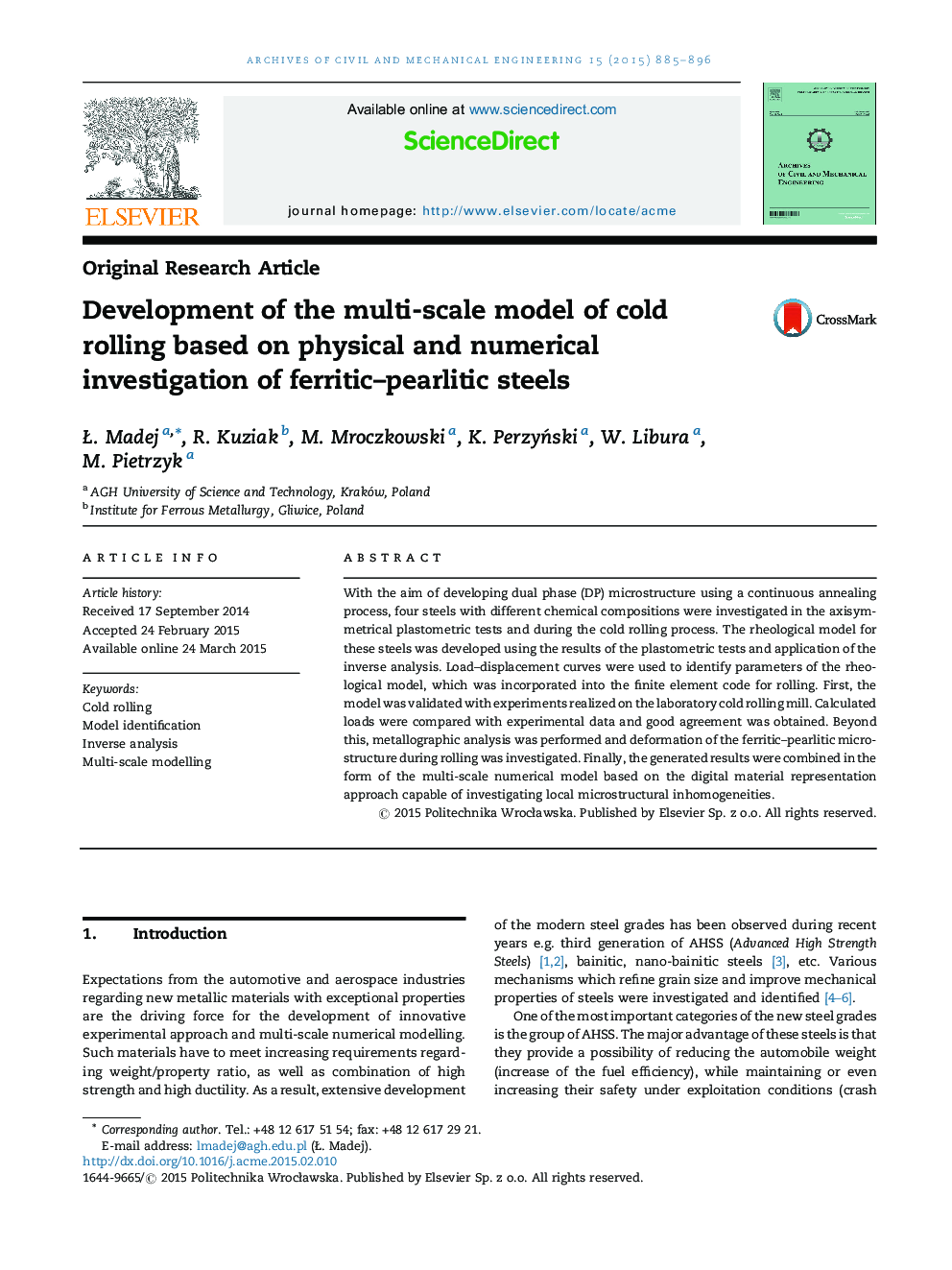| کد مقاله | کد نشریه | سال انتشار | مقاله انگلیسی | نسخه تمام متن |
|---|---|---|---|---|
| 245936 | 1428225 | 2015 | 12 صفحه PDF | دانلود رایگان |

• Increase in carbon and alloying element content in steels leads to complex multi-phase microstructures.
• Increase of bainite volume fraction directly influences microstructure morphology after deformation.
• Inverse analysis procedure provides reliable material hardening data.
• The multi-scale concurrent digital material representation model predicts local inhomogeneities.
With the aim of developing dual phase (DP) microstructure using a continuous annealing process, four steels with different chemical compositions were investigated in the axisymmetrical plastometric tests and during the cold rolling process. The rheological model for these steels was developed using the results of the plastometric tests and application of the inverse analysis. Load–displacement curves were used to identify parameters of the rheological model, which was incorporated into the finite element code for rolling. First, the model was validated with experiments realized on the laboratory cold rolling mill. Calculated loads were compared with experimental data and good agreement was obtained. Beyond this, metallographic analysis was performed and deformation of the ferritic–pearlitic microstructure during rolling was investigated. Finally, the generated results were combined in the form of the multi-scale numerical model based on the digital material representation approach capable of investigating local microstructural inhomogeneities.
Journal: Archives of Civil and Mechanical Engineering - Volume 15, Issue 4, September 2015, Pages 885–896